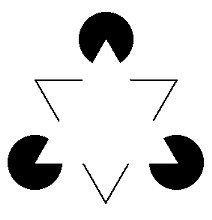
1. How does the inverse projection problem make object perception difficult to explain?
2. How does the visual system respond to contours and changing stimuli?
3. What leads to figure-ground segregation? What are the Gestalt laws of perceptual organization?
4. What are the pros and cons of the Gestalt approach?
5. Describe the following approaches to object perception, and give pros and cons for each:
- template theories
- feature-based theories
- computational approach
- Recognition By Components
6. What is shape constancy? What environmental information allows this mechanism to work?
7. How do bottom-up and top-down processing affect object perception?
8. What is the difference between specificity, sparse, and population coding of neural information?
9. Is ESP for real?
There are an estimated “30,000 readily discriminable objects” known by the average adult” (Biederman, 1987, p.127).
Information required to identify distal stimulus:
1. _____ sources: primary (sun, light bulbs), secondary (moon, walls)
2. reflectance of surfaces: proportion of light reflected; absorption spectra: surfaces absorb certain wavelengths
3. surface ___________: position of surface causes different amount of light to fall on it/reflect off it
4. viewing position: scene appears different from different viewing angles
_______ __________ problem: how do you go from the proximal stimulus to identifying the distal stimulus?
- “uncreate” the image, using reverse geometry?
- retinal image is 2-D, real world is 3-D
- any 2-D image may have many potential 3-D sources that created it (__________________)
- but the visual system selects the proper interpretation (most of the time)
- how does it do this?
Contour Detection
• _______: border between light and dark areas in an image
• ________ (“total field”):
- sort of sensory deprivation; developed to test for telepathic communication
- translucent ping-pong ball halves placed over eyes; headphones deliver white noise
- causes some observers to “blank out” or hallucinate
- sharp luminance contours must be important to visual system
Dynamic Stimuli
• _____________: minute, involuntary, almost imperceptible eye movements that occur during fixations; purpose seems to be to change the position of the image on the retina
Pritchard (1961):
- observers wore contact lenses with attached device
- projected constant image onto retina
- image ___________ within ~3 seconds
- eye responds best to changing stimuli; static pattern will quickly fade from view
- basis: motion could be produced by a succession of stationary stimuli (Max Wertheimer, 1912)
- motto: “the whole is different than the sum of its parts”
- ________ contours: contours not present on retina, but still affect contour perception
e.g., Kanizsa triangle (1979):

(end-stopped cells are activated by illusory contours)
e.g., Rubin figure (1915):
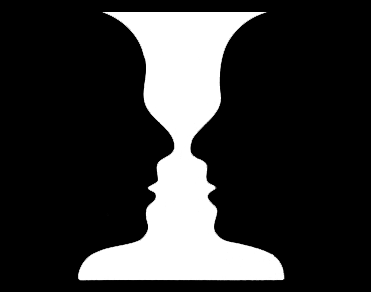
Generally, figures:
• appear to be in _____
• are smaller
• have well-defined _____
• are meaningful
• have more ______
• differ from background in lightness
• _________/nearness: things near to each other tend to be grouped together
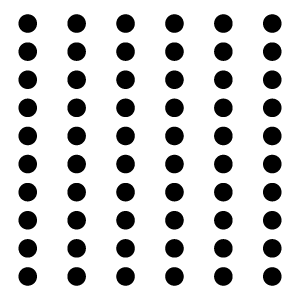
• __________: similar things tend to be grouped together
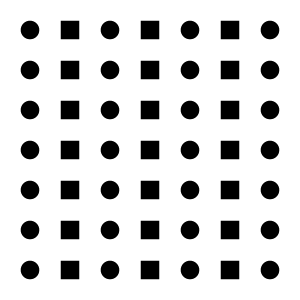
• good ____________: points that, if connected, would result in either straight or smoothly curving lines, tend to be seen as belonging together; and lines tend to follow the smoothest path
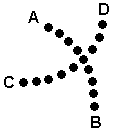

• _______: a space enclosed by a contour (real or illusory) tends to appear as a figure
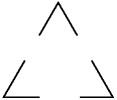
• common ____: things that are moving in the same direction tend to be grouped together
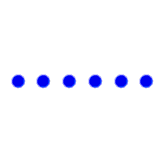
• ______________/familiarity: things that are meaningful or familiar tend to form groups

• law of ________ (“good figure” or “simplicity”): every stimulus pattern is seen in such a way that the resulting structure is as simple as possible

Gestalt Pros & Cons:
![]() ________ approach
________ approach
![]() operates post hoc; not good for predictions
operates post hoc; not good for predictions
![]() not good at ____________
not good at ____________
![]() vague definitions (“simplicity”?)
vague definitions (“simplicity”?)
___________: perceiving something as previously experienced
e.g., Have you seen this before?

______________: naming or classifying an object
e.g., What is it? What is it used for?
• compare input to a model or “template” stored in memory
• stimulus categorized by exact match
Pros & Cons:
![]() successfully used by ________
successfully used by ________
e.g., MICR numbers at the bottom of a cheque

![]() intolerant to __________ in a stimulus:
intolerant to __________ in a stimulus:

![]() too many templates required
too many templates required
![]() cannot account for novel stimuli
cannot account for novel stimuli
![]() cannot handle _______:
cannot handle _______:
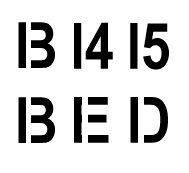
Pandemonium (Selfridge, 1959): ________ ___________ Processing model
• Stage 1: “Image Demon” gets sensory input
e.g., R
• Stage 2: “Feature Demon_” analyze input in terms of features
e.g., ![]()
• Stage 3: “Cognitive Demon_” determine which groups of features are present
e.g, P R T more than A or X
• Stage 4: “Decision Demon” identifies pattern by listening for Cognitive Demon shouting the loudest
e.g., R
Pros & Cons:
![]() evidence: feature-detectors physiologically relate to _____ in visual system
evidence: feature-detectors physiologically relate to _____ in visual system
![]() can identify wide range of stimuli--just specify component features
can identify wide range of stimuli--just specify component features
![]() doesn’t define “________”: single line segment? two lines forming an angle? curved line?
doesn’t define “________”: single line segment? two lines forming an angle? curved line?
![]() cannot handle Gestalt organizational principles: when is a row of dots a line?
cannot handle Gestalt organizational principles: when is a row of dots a line?
![]() cannot handle _______
cannot handle _______
![]() what about real-life/3-D objects?
what about real-life/3-D objects?
(Marr, 1982):
• multi-stage approach that applies precise mathematical formulas
• ______ sketch: image analyzed to determine “primitives”: contours, object edges
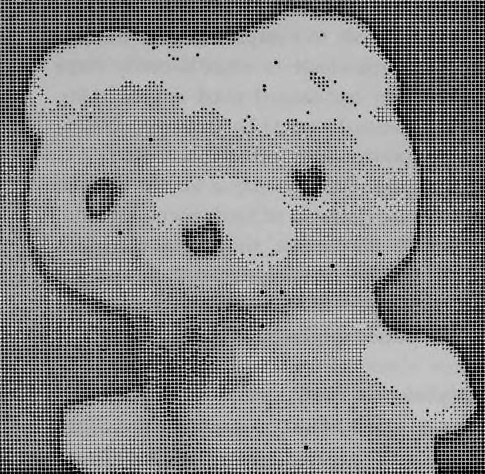 →
→ 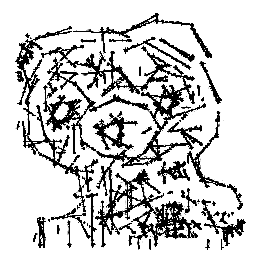
- based on natural constraints: consistent, universal properties of the world
e.g., changes in luminance at borders are abrupt; fuzzy border doesn’t delineate a different object--it’s a property of shading within an object
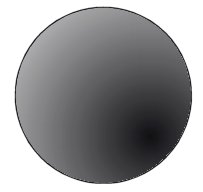
• ____ sketch: primitives are grouped (e.g., via Gestalt principles), and processed using depth information
 →
→ 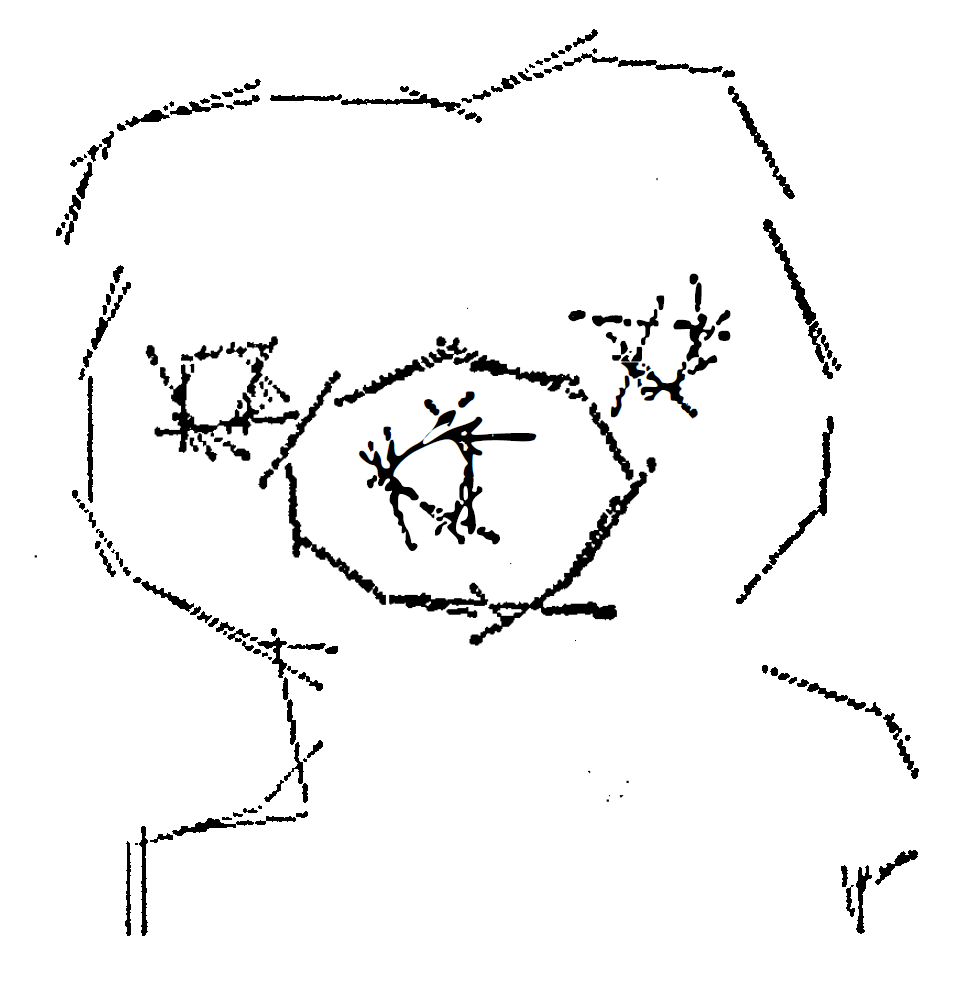
- structured with reference to the observer’ point of view
• ___ _____ representation: 3-D component parts and their relations are determined, and matched to stored knowledge to identify object
 →
→ 
- is independent of viewing angle/point of view
- only this last stage is available to consciousness
Pros & Cons:
![]() can be highly accurate
can be highly accurate
![]() takes world _________ into account
takes world _________ into account
![]() difficult to identify neural circuits for this processing
difficult to identify neural circuits for this processing
(Biederman, 1987):
• basis: visual scene can be decomposed into basic elements that are constant
• components called “_____” (geometric icons): 36 basic volumetric shapes that can be modified (length, width, etc.), and yet remain identifiable (cylinder, brick, cone)
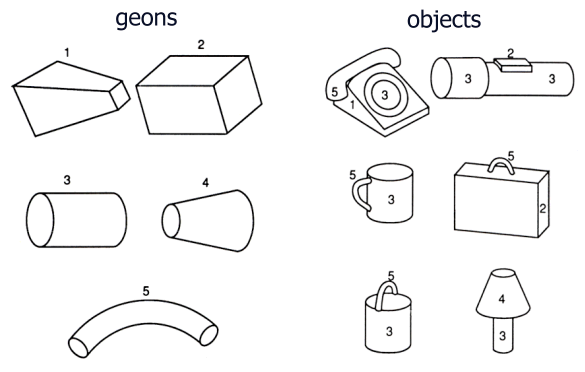
• Principle of ____________ ________: if an object’s geons can be determined, then the object can be identified--even if the object is partially obscured
Pros & Cons:
![]() has well-defined ________
has well-defined ________
![]() can handle variation, novel stimuli
can handle variation, novel stimuli
![]() cannot handle context
cannot handle context
![]() may be too broad--objects also differ in their _______
may be too broad--objects also differ in their _______
![]() not all 3-D objects easily decompose into parts (e.g., puddle)
not all 3-D objects easily decompose into parts (e.g., puddle)
- perceived shape of an object remains constant despite variations in ___________
- knowledge of _____ is important (indicates orientation of object), as is assumption of rigidity
• _________ view: what is the real shape of the object?
• __________ view: what is the shape of the image on the retina?
Thouless (1931):
- observers viewed a circle at different angles
- task: match retinal image with given ellipses
- observers never produced correct __________ view; there was always some shape constancy at work
- critical factor in shape constancy: knowing your viewing angle/___________ of the object
• ______-__ (a.k.a. data-driven or data-based) processing: incoming sensory stimuli are gathered by receptors and combined into a whole
- e.g., representation created via Gestalt laws
• ___-____ (a.k.a. conceptually driven or knowledge-based) processing: higher-level cognitive processes like memories, beliefs, or expectations affect interpretations of (possibly ambiguous) stimulus input gathered by the senses
- may tell us “where to look”
Biederman (1981):
- observers cued to a location on a screen
- scene then presented on screen
- task: identify object at cued location
- result: observers did worse identifying familiar items in an impossible location (position violation) than in an unlikely location (probability violation) or normal location (no violation)
e.g., fire hydrant on top of mailbox vs. on lunch counter vs. on street
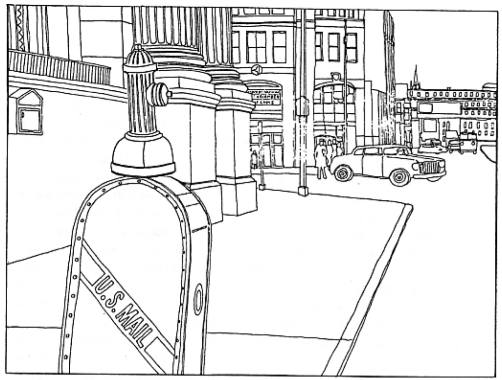
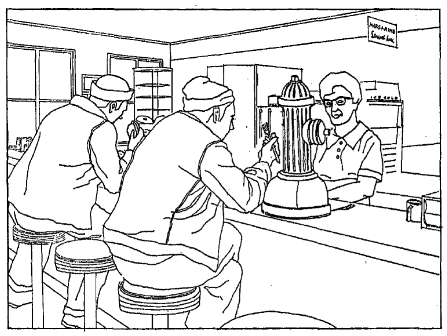
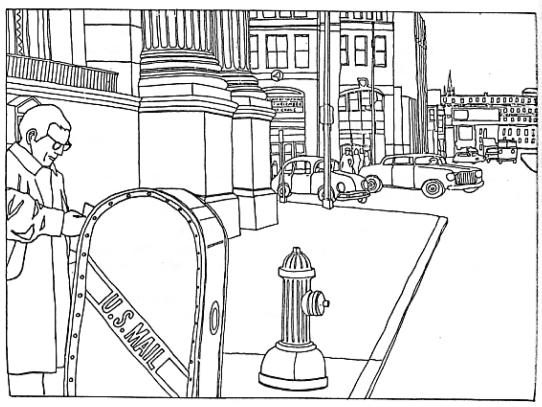
- conclusion: conceptual knowledge of _______ influences perception
Perceptual _______: perceiving and identifying an object is affected by previous experience with that object (or another one similar in form)
e.g., seeing the word boat will subsequently enhance processing of the word goat
Perceptual ___: predisposition to interpret a stimulus in a particular way, based on past experience or knowledge
e.g., Stroop effect: you can’t help but read the words
_______: mental structures that help us organize the world into a coherent, meaningful whole
- are learned, thus affected by context, culture, & experience
e.g., Gregory & Gombrich (1973):
- interpretations of an ambiguous scene are different for West Africans than for Westerners
e.g., Hudson (1960):
- members of the Bantu tribe of South Africa had little exposure to pictures and photos
- misinterpreted _____ cues in drawings
__________: illusion or misperception involving a vague or obscure stimulus being perceived as something clear and distinct
e.g., Mother Teresa’s face in a ________ ___
e.g., _____ on Mars
e.g., 1954 “Devil’s Head” Canadian bank notes
- used in __________ tests, like the Rorschach ink blot test (1921)
Top-down and bottom-up processing are both required:
• only top-down → see only what you ______ to see--even if it differs from reality?
• only bottom-up → you can’t use anything you’ve _______ about the (perceptual) world
How do neural impulses represent stimulus information?
• ___________ coding: one specific neuron is activated by a particular stimulus
- “___________ cell”: only fires when you see your grandmother--regardless of viewing angle or point of view
• ______ coding: a small number of neurons is used to encode a stimulus
• __________ coding: stimulus encoded by pattern of activity across a large number of neurons
• others:
- temporal coding: timing of neural impulses encodes the stimulus
- temporal synchronicity coding: firing of neurons is synchronized over time
e.g., increase sound intensity from 10 dB to 50 dB:
• specificity coding: “10 dB neuron” stops firing, “50 dB neuron” activates
• sparse coding: a set of five neurons change their firing rate
• population coding: 100 neurons increase firing, or total activity changes from 100 to 500 active neurons
• temporal coding: neurons increase firing rate from 10 to 50 impulses/second
Quiroga et al. (2005):
- 64 electrodes implanted in 8 patients to determine seizure-onset zone, before surgery for epilepsy
- implants in medial temporal lobe (MTL), including ___________ and amygdala
- participants shown images of celebrities, animals, objects, and landmark buildings to find strong response in at least one neuron
- one patient had neurons that responded significantly to 7 different pictures of Jennifer Aniston (less so to “_________,” and anything else)
- another had some that responded most to Halle Berry: photos, drawings, masked/costumed as Catwoman, and even the letter string “_____ _____”
- a follow-up study found single ____________ neurons in the MTL: responded to photos, letter strings, and spoken names of the same person (Quiroga et al., 2009)
- evidence for invariant, sparse (selective), and explicit coding
- are these grandmother cells?
![]() cells are not absolutely _________ (significantly weaker responses to other stimuli)
cells are not absolutely _________ (significantly weaker responses to other stimuli)
![]() unlikely that there’s exactly one “Halle Berry neuron”
unlikely that there’s exactly one “Halle Berry neuron”
![]() MTL involved in _______, which may influence neural activity
MTL involved in _______, which may influence neural activity
![]() although MTL structures implicated in storage of memories, they are not the ultimate “_______ area”
although MTL structures implicated in storage of memories, they are not the ultimate “_______ area”
• _________: direct mind-to-mind communication
• ____________: perception of distant events, beyond the range of vision
• ____________: perception of future events (not just guessing)
• (telekinesis/psychokinesis: acting upon objects directly with the mind)
Timeline:
1889: Max Dessoir coined the term ______________: the scientific study of phenomena produced by living beings that cannot be explained by known scientific laws and forces
1930s: biologist J.B. Rhine established first scientific laboratory dedicated to psi (parapsychological) research at Duke University
- developed tests with associate Karl E. Zener: 25-card set of 5 different cards:

1979: Princeton Engineering Anomalies Research (PEAR) lab established at Princeton University to investigate “anomalous human-machine interactions”
1995: CIA disclosed Project StarGate, its $20 million “psychic spying” program (produced no results)
Anecdotes vs. Evidence:
• Nostradamus: wrote _________ prophesies; only interpretable post hoc
• 41% of the population believes in ESP (Gallup, 2005)
• Rhine et al. (1940): 27 of 33 ESP studies were statistically significant
- but no precautions made against ________ (Zener deck has 25 cards that can be counted; cards were thin enough to see through; possibility of sensory leakage of information)
- no independent verification of results
• Wiseman, Smith, & Milton (1998):
- Jaytee the “psychic dog” would run to window whenever owner decided to come home
- 4 experiments done
- dog videotaped; had owner return spontaneously, or when paged
- Jaytee went to window--to look at cats, children, and passing cars
- only went to window ____ at the right time; not statistically significant
• Layton & Turnbull (1975):
- computer generated 100-item list of numbers 1, 2, 3, 4, 5
- 179 participants given list in sealed envelope, asked to guess the numbers
• told ESP was “harmful”: 19.49% correct
• told ESP was “beneficial”: 20.66% correct
- difference was statistically significant
- however, results of an attempted replication were not ___________
• Strentz (1986):
- evaluated National Enquirer’s psychic predictions from 1978-1985
- only 2 of 486 predictions came true (____% accuracy)
• James Randi Educational Foundation: there is __ ___ 100% scientifically certified to produce any reliable, valid ESP phenomenon